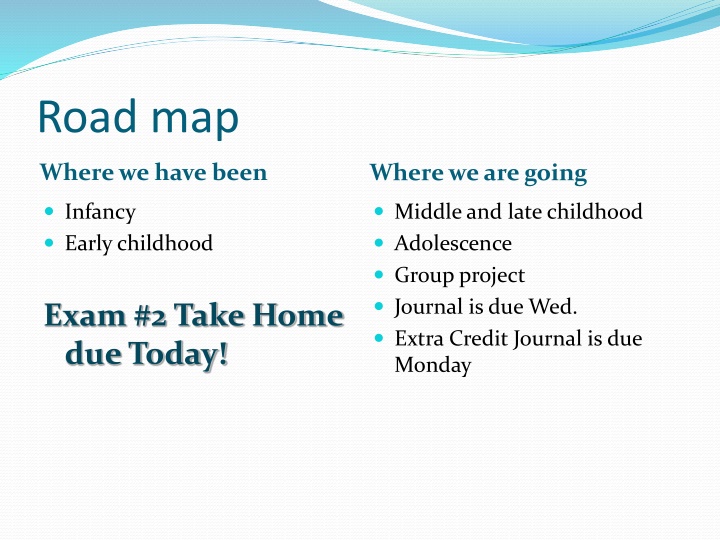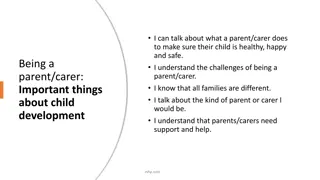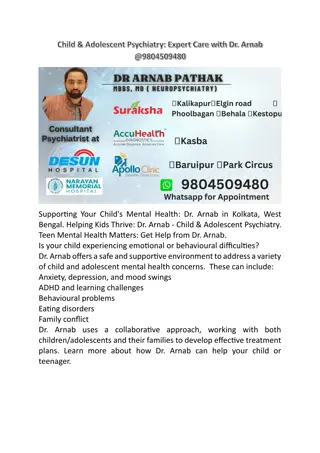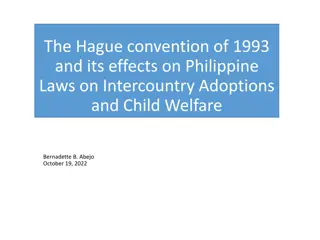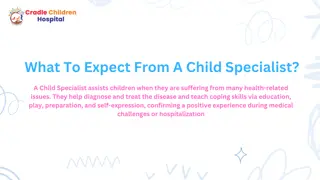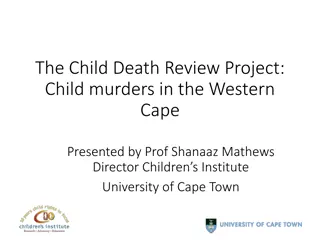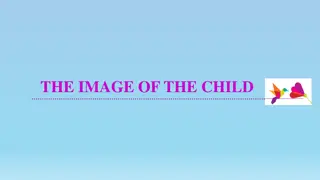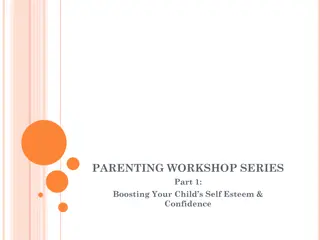Child Development: Challenges and Opportunities in Modern Society
Exploring various stages of childhood development from infancy to adolescence, this content delves into critical issues such as obesity, physical education, sports participation, and disabilities affecting children in the U.S. It discusses factors influencing children's health, social interactions, and learning, shedding light on prevalent problems and potential benefits in today's society.
Download Presentation

Please find below an Image/Link to download the presentation.
The content on the website is provided AS IS for your information and personal use only. It may not be sold, licensed, or shared on other websites without obtaining consent from the author.If you encounter any issues during the download, it is possible that the publisher has removed the file from their server.
You are allowed to download the files provided on this website for personal or commercial use, subject to the condition that they are used lawfully. All files are the property of their respective owners.
The content on the website is provided AS IS for your information and personal use only. It may not be sold, licensed, or shared on other websites without obtaining consent from the author.
E N D
Presentation Transcript
Road map Where we have been Where we are going Infancy Early childhood Middle and late childhood Adolescence Group project Journal is due Wed. Extra Credit Journal is due Monday Exam #2 Take Home due Today!
Obesity Obesity: Prevalent in children, mostly ages 6 to 11 6-year-old has 25% risk of being obese adult 12-year-old has 75% risk of being obese adult Linked to lack of exercise A risk factor for other medical and psychological problems Low self-esteem, depression, and teasing by peers are common Today, too much time is spent watching TV, on computers, and playing video games. Obese children are less active and more sedentary Context in which child eats can influence eating habits and weight Children who eat meals with their families have better nutrition Eating while watching TV is implicated; high fat, high sugar, low nutrition snacks are advertised and eaten
Percentage of U.S. Children in Daily Physical Education Programs from 1969 to 1999 80 70 60 50 40 30 20 10 0 1969 1979 1989 1999 Fig. 10.1
Sports More children become involved in sports every year; communities and schools are offering more sports programs 60% of boys and 40% of girls participate Sports participation has both positive and negative effects concerns about pressure to win and exploitation More of children s sports participation is formal and adult supervised than in previous decades Child created games are less likely to be contests of skill and have higher element of chance, provide practice and exploration of skills as well as rules and social skills What are the potential benefits and risks associated with this?
Disabilities Approximately 10% of U.S. children have a disability (learning disability, mental retardation, serious emotional disturbance) and receive special education or related services. More than 40% of these have learning disabilities Learning disability has 3 criteria: Exclusionary criteria IQ achievement discrepancy Specificity of learning problem
U.S. Children with a Disability Who Receive Special Education Services (2001-2002)
Law and Special Education 1970s: Laws passed requiring all public schools to serve disabled children 1975 Public Law 94-142, was renamed Individuals with Disabilities Education Act (IDEA) in 1990 Law requires disabled students receive IEP: Individualized education plans LRE: Least restrictive environment setting Inclusion in full-time, regular classroom
Learning to Read This is a major accomplishment early in Middle childhood Builds on emergent literacy such as concepts about print, phonemic awareness, rhyming. Etc. Children learn much more readily in a print rich environment Parents who read for pleasure and regularly read to and with children have offspring that learn reading more quickly and enjoy reading more
The Relation of Reading Achievement to Number of Pages Read Daily 240 230 220 210 200 190 180 170 0 6 to 10 5 or fewer 11 or more Number of pages read daily
2 Major methodologies Whole language Children are taught sight words and how to use context clues, while reading real literature Based on research showing that good readers extensively use context clues and children enjoy reading more when they read real literature Phonics Approach Children are taught to sound out words and even nonwords in Frequent phonics drills Modern research strongly indicates that this is essential, especially for struggling readers Both can be helpful but ALL good readers must learn phonics
Piaget and Concrete Operations Concrete operations are reversible Children begin to understand that an action can be undone by another action They also learn that on aspect can compensate for an other (a width for height or distance from a balancing point for weight) Children can look at two properties together Also begin to express mixed emotions Also recognize that things can fall into multiple categories Begin to focus on transformations as opposed to states alone
Concrete Operations 2 Children can follow simple diagrams and tables Categorizing abilities improve and they can more readily switch criteria and multiple possible criteria Seriation- the ability to order things along a quantitative dimension
Concrete Operations 3 Transivity using information about relations to from conclusions A<B B<C then A<C Younger children must make all comparisons to solve these problems Older children can follow the logic 7-8 year olds can do this with help remembering the relations
Concrete Operations3 Categorization becomes more advanced Children develop greater flexibility in categorizing and develop more complex hierarchies Children are now able to succeed at class inclusion problems
Concrete Operations4 Increased ability in spatial reasoning Mapping ability Creation and use of maps improves Giving adequate directions improves Preschool, early school age Landmarks Landmarks along organized route of travel Ages 8 - 10 Overall view of large-scale space End of middle childhood
Neo-Piagetians suggest more emphasis on how children process information Case suggests gains are due to automation of schemes freeing resources to develop new schemes or combine schemes During middle and late childhood Information processing changes include memory, metacognition, and critical and creative thinking Short-term memory increases quickly before age 7 Increases from 4 to 7 items from age 7 to age 12 Long-term memory increases; expertise depends on learning activities and strategies used
Information Processing Gains in Middle and Late Childhood Increases in processing speed and memory capacity More resources available for problem solving Gains in inhibition/effortful control Helps in focus of attention and planning which also increase Greater use of memory and problem solving strategies Elaboration, organization Greater metacognitive abilities Still struggle with cognitive self-regulation- continually checking progress toward a goal Parents and teachers can promote this which in turn increases academic self-efficacy
Intelligence Intelligence: problem-solving skills, ability to learn, speed of processing Usually broken into verbal (oddly it includes math) and performance Crystallized intelligence - knowledge and application of knowledge Liquid intelligence general ability to adapt and learn
IQ Tests Intelligence tests: Binet Tests (early 1900s): IQ is MA divided by CA and multiplied by 100 Stanford-Binet tests approximate a normal distribution a bell-shaped curve. Wechsler Scales: 11 subscales, 6 verbal, 5 nonverbal WPPSI-R: ages 4 to 6.5 years WISC-III: ages 6 to 16 years WAIS-III: adults
Sample Subscales of the Wechsler Intelligence Scale for Children (WISC-IV-Integrated)
Theories of Intelligence Thurstone: 7 types of primary abilities exist: verbal comprehension, word fluency, spatial visualization, number ability, associative memory, reasoning, and perceptual speed Sternberg: Triarchic theory Analytical, creative, and practical intelligence Gardner: 9 types of intelligence verbal, mathematical, spatial, bodily- kinesthetic, musical, interpersonal, intrapersonal, and naturalist, existentialist There is great debate over what qualifies as a type of intelligence and how to assess it
Language Development Changes occur in how words are selected Increased logical reasoning/analytical skills Increased ability to understand and use complex grammar How to respond to fact that words are understood before child learns to read them? Whole-language approach Basic-skills-and-phonics approach Guided oral reading also recommended
Bilingualism Learning a 2nd language is easiest for children Ability to speak 2 languages has positive effect on child s cognitive development and performance on tests in Control of attention (focus) Concept formation Analytic reasoning Cognitive flexibility Cognitive complexity
Grammar Proficiency and Age at Arrival in the United States 100 Ten years after arriving in the U.S., persons from China and Korea took a grammar test 90 80 Percentage correct on grammar test 70 60 50 Native 3 7 8 10 11 15 17 39 Age at time of arrival in U.S. (years)
